#Semiconductors
Text
Scientists from NTU Singapore have developed ultra-thin semiconductor fibers that can be woven into fabrics, turning them into smart wearable electronics. Their work has been published in the journal Nature.
To create reliably functioning semiconductor fibers, they must be flexible and without defects for stable signal transmission. However, existing manufacturing methods cause stress and instability, leading to cracks and deformities in the semiconductor cores, negatively impacting their performance and limiting their development.
Continue Reading.
95 notes
·
View notes
Photo
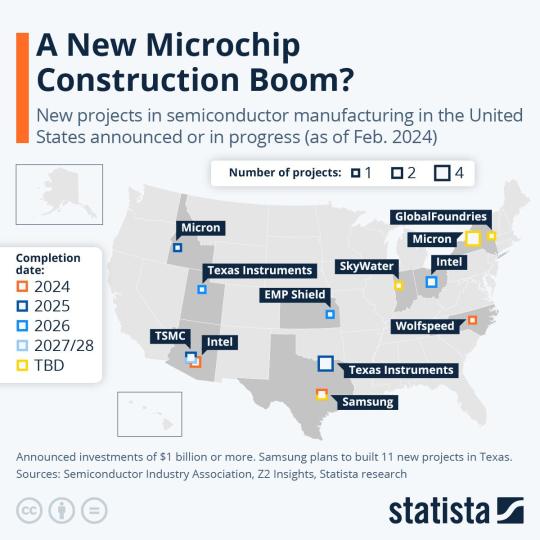
New projects in semiconductor manufacturing in the United States announced or in progress.
138 notes
·
View notes
Text
The act of of agreeing with a particular kind of person that “crystals are full of energy” and letting them go on with their post-Aquarian emotional voodoo spiel for a bit before hijacking the conversation in the direction of semi-conductor engineering and manufacture and seeing how long they can endure
#wizardposting#feyosha#wizard#free range sustainable shitpost#crystals#semiconductors#Magic crystals#new age#witchy#oh yea the crystals sure are full of energy#lithium ion batteries#for example
167 notes
·
View notes
Text

They're also refusing to fund my device that demonstrates uncontrolled hot fusion.
Room Temperature [Explained]
175 notes
·
View notes
Text

'Surprising' hidden activity of semiconductor material spotted by researchers
New research suggests that materials commonly overlooked in computer chip design actually play an important role in information processing, a discovery that could lead to faster and more efficient electronics.
Using advanced imaging techniques, an international team led by Penn State researchers found that the material that a semiconductor chip device is built on, called the substrate, responds to changes in electricity much like the semiconductor on top of it.
The researchers worked with the semiconductor material, vanadium dioxide, which they said shows great potential as an electronic switch. They also studied how vanadium dioxide interacts with the substrate material titanium dioxide and said they were surprised to discover that there seems to be an active layer in the substrate that behaves similarly to the semiconductor material on top of it when the semiconductor switches between an insulator—not letting electricity flow—and a metal—letting electricity flow.
Read more.
#Materials Science#Science#Semiconductors#Electronics#Penn State#Vanadium dioxide#Titanium dioxide#Vanadium#Titanium#Oxides
22 notes
·
View notes
Text

"The promise of diamond semiconductors." Scientific American. October. 1992.
Internet Archive
538 notes
·
View notes
Text
Instead of using a silicon wafer of uniform height, you make the silicon thinner, say 150 nanometers, but only in specific regions. Those variations in height — without the addition of any other materials — provide a means of controlling the propagation of light through the chip, since the variations in height can be distributed to cause light to scatter in specific patterns, allowing the chip to perform mathematical calculations at the speed of light.
#nanotechnology#computing#semiconductors#AI#electronics#energy#engineering#scienceandtechnology#future
14 notes
·
View notes
Photo
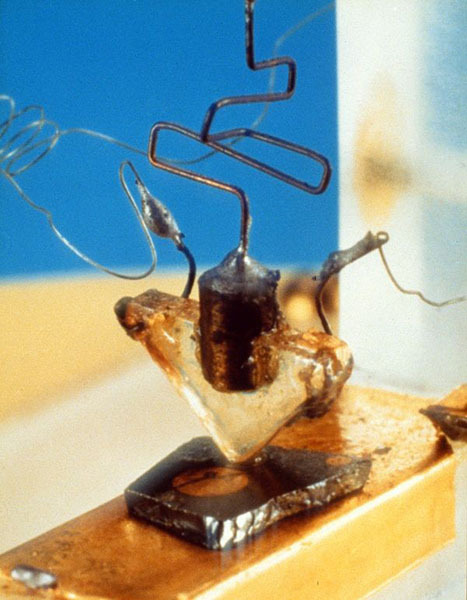


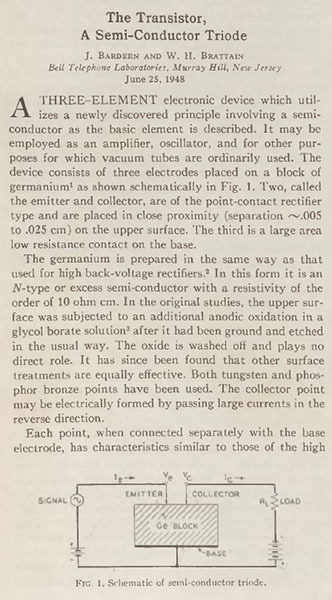


The Transistor – Scientist of the Day
Seventy-five years ago, on December 16, 1947, John Bardeen and Walter Brattain successfully tested the world’s first transistor in Murray Hill, New Jersey.
read more...
#histSTM#transistor#electronics#radio#semiconductors#Bell Labs#Texas Instruments#Bardeen#Brattain#Shockley
35 notes
·
View notes
Text
Electronics Components and Uses:
Here is a list of common electronics components and their uses:
Resistor:
Use: Limits or controls the flow of electric current in a circuit.
Capacitor:
Use: Stores and releases electrical energy; used for filtering, timing, and coupling in circuits.
Inductor:
Use: Stores energy in a magnetic field when current flows through it; used in filters, transformers, and oscillators.
Diode:
Use: Allows current to flow in one direction only; used for rectification, signal demodulation, and protection.
Transistor:
Use: Amplifies and switches electronic signals; fundamental building block of electronic circuits.
Integrated Circuit (IC):
Use: Contains multiple electronic components (transistors, resistors, capacitors) on a single chip; used for various functions like amplification, processing, and control.
Resistor Network:
Use: A combination of resistors in a single package; used in applications where multiple resistors are needed.
Potentiometer:
Use: Variable resistor that can be adjusted to control voltage in a circuit; used for volume controls, dimmer switches, etc.
Varistor:
Use: Protects electronic circuits from excessive voltage by acting as a voltage-dependent resistor.
Light-Emitting Diode (LED):
Use: Emits light when current flows through it; used for indicator lights, displays, and lighting.
Photodiode:
Use: Converts light into an electric current; used in light sensors and communication systems.
Zener Diode:
Use: Acts as a voltage regulator by maintaining a constant voltage across its terminals.
Crystal Oscillator:
Use: Generates a stable and precise frequency; used in clocks, microcontrollers, and communication devices.
Transformer:
Use: Transfers electrical energy between two or more coils through electromagnetic induction; used for voltage regulation and power distribution.
Capacitive Touch Sensor:
Use: Detects touch or proximity by changes in capacitance; used in touchscreens and proximity sensing applications.
Voltage Regulator:
Use: Maintains a constant output voltage regardless of changes in input voltage or load; used for stable power supply.
Relay:
Use: Electromagnetic switch that controls the flow of current in a circuit; used for remote switching and automation.
Fuse:
Use: Protects electronic circuits by breaking the circuit when current exceeds a certain value; prevents damage from overcurrent.
Thermistor:
Use: Resistor whose resistance changes with temperature; used for temperature sensing and compensation.
Microcontroller/Microprocessor:
Use: Processes and controls electronic signals; the brain of many electronic devices and systems.
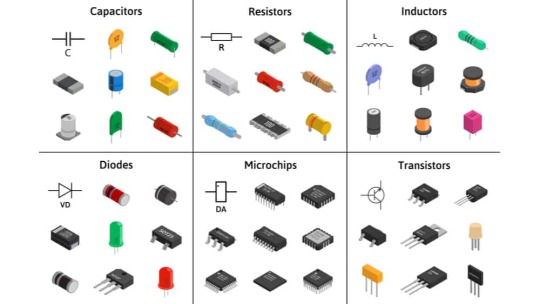
fig:google-electronics

fig:google-electronics
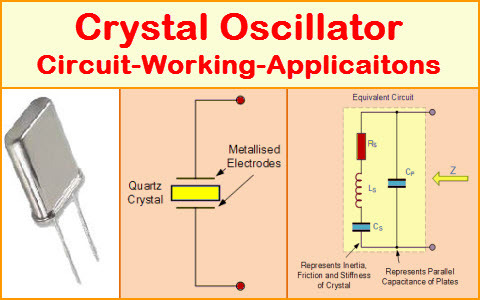
fig:Crystal-Oscillator
This list covers some of the basic electronic components, and there are many more specialized components used for specific applications within the field of electronics.
#electronic#electricity#electric vehicles#electric cars#engineering#semiconductors#wireless#cables#electronics#smartphone#hardware
3 notes
·
View notes
Text
Global AI Accelerator Chip Market Expected to Grow Substantially Owing to Healthcare Industry

Global AI Accelerator Chip Market Expected to Grow Substantially Owing to Increased Use of AI Accelerator Chips in Healthcare Industry.
The global AI accelerator chip market is expected to grow primarily due to its growing use in the healthcare industry. The cloud sub-segment is expected to flourish immensely. The market in the North American region is predicted to grow with a high CAGR by 2031.
NEW YORK, March 17, 2023 - As per the report published by Research Dive, the global AI accelerator chip market is expected to register a revenue of $332,142.7 million by 2031 with a CAGR of 39.3% during the 2022-2031 period.
Dynamics of the Global AI Accelerator Chip Market
Growing use of AI accelerator chips across the global healthcare industry is expected to become the primary growth driver of the AI accelerator chip market in the forecast period. Additionally, the rise of the cyber safety business is predicted to propel the market forward. However, according to market analysts, lack of skilled AI accelerator chip workforce might become a restraint in the growth of the market.
The growing use of AI accelerator chip semiconductors is predicted to offer numerous growth opportunities to the market in the forecast period. Moreover, the increased use of AI accelerator chips to execute AI workloads such as neural networks is expected to propel the AI accelerator chip market forward in the coming period.
COVID-19 Impact on the Global AI Accelerator Chip Market
The Covid-19 pandemic disrupted the routine lifestyle of people across the globe and the subsequent lockdowns adversely impacted the industrial processes across all sectors. The AI accelerator chip market, too, was negatively impacted due to the pandemic. The disruptions in global supply chains due to the pandemic resulted in a decline in the semiconductor manufacturing industry. Also, the travel restrictions put in place by various governments reduced the availability of skilled workforce. These factors brought down the growth rate of the market.
Key Players of the Global AI Accelerator Chip Market
The major players in the market include:
- NVIDIA Corporation
- Micron Technology Inc.
- NXP Semiconductors N.V.
- Intel Corporation
- Microsoft Corporation
- Advanced Micro Devices Inc. (AMD)
- Qualcomm Technologies Inc.
- Alphabet Inc. (Google Inc.)
- Graphcore Limited.
- International Business Machines Corporation
These players are working on developing strategies such as product development, merger and acquisition, partnerships, and collaborations to sustain market growth.
For instance, in May 2022, Intel Habana, a subsidiary of Intel, announced the launch of 2nd generation AI chips which according to the company, will provide a 2X performance advantage over the previous generation NVIDIA A100. This product launch will help Intel Habana to capitalize on this rather nascent market and will consolidate its lead over the competitors further.
What the Report Covers:
Apart from the information summarized in this press release, the final report covers crucial aspects of the market including SWOT analysis, market overview, Porter's five forces analysis, market dynamics, segmentation (key market trends, forecast analysis, and regional analysis), and company profiles (company overview, operating business segments, product portfolio, financial performance, and latest strategic moves and developments.)
Segments of the AI Accelerator Chip Market
The report has divided the AI accelerator chip market into the following segments:
Chip Type: Graphics Processing Unit (GPU), Application-Specific Integrated Circuit (ASIC), Field Programmable Gate Arrays (FPGA), Central Processing Unit (CPU), and others
Processing Type: edge and cloud
Application: Natural Language Processing (NLP), computer vision, robotics, and network security
Industry Vertical: financial services, automotive and transportation, healthcare, retail, telecom, and others
Region: North America, Europe, Asia-Pacific, and LAMEA
SegmentSub-SegmentChip TypeCentral Processing Unit (CPU)
– Most dominant market share in 2021
- The use of CPU for improving the performance of a computer while running graphics and video editors are expected to push the growth of this sub-segment further.Processing TypeCloud – Significant revenue growth in 2021
Cloud acceleration chip helps content creators, publishers, and other entities to offer material to end users promptly which is predicted to propel the growth rate of the market higher.ApplicationNatural Language Processing (NLP) – Highest market share in 2021
Increased use of Natural Language Processing (NLP) due to its ability to make computer-human interactions more natural is expected to propel the sub-segment forward.Industry VerticalHealthcare– Huge market revenue in 2021
The growing use of AI by major healthcare companies to complement medical imaging is anticipated to offer numerous growth opportunities to the sub-segment in the forecast period.RegionNorth America – Most profitable by 2031
The development of new technologies in artificial intelligence (AI) accelerators in this region is predicted to propel the market in the forecast period.
Read the full article
3 notes
·
View notes
Photo

Semiconductor fabrication plants around the world
69 notes
·
View notes
Text


2 notes
·
View notes
Text
My Interview in Forbes: Taiwan President Tsai & Chips War
My March 30th post (Taiwan’s Historic Split Screen) was written as President Tsai Ing-wen arrived in New York at the start of her diplomatic visit to Central America. That piece promised a follow-up on the occasion of her return transit to Los Angeles — and meeting with Speaker of the House Kevin McCarthy — en route back to Taiwan. The Tsai-McCarthy meeting took place 6 days ago on April 5th but…

View On WordPress
2 notes
·
View notes
Text

Researchers create first functional semiconductor made from graphene
Researchers at the Georgia Institute of Technology have created the world's first functional semiconductor made from graphene, a single sheet of carbon atoms held together by the strongest bonds known. Semiconductors, which are materials that conduct electricity under specific conditions, are foundational components of electronic devices. The team's breakthrough throws open the door to a new way of doing electronics.
Their discovery comes at a time when silicon, the material from which nearly all modern electronics are made, is reaching its limit in the face of increasingly faster computing and smaller electronic devices.
Walter de Heer, Regents' Professor of physics at Georgia Tech, led a team of researchers based in Atlanta, Georgia, and Tianjin, China, to produce a graphene semiconductor that is compatible with conventional microelectronics processing methods—a necessity for any viable alternative to silicon.
Read more.
32 notes
·
View notes
Text
Semiconductors are cool ngl
2 notes
·
View notes
Text

Apple is already looking ahead to 2nm processors
2 notes
·
View notes